
Every person is unique!
Our experienced team will be happy to advise you in detail and free of charge on all matters relating to your health. Book your consultation appointment now:
Relieve allergies: Treat hay fever & co. with natural remedies
July 15, 2021
Dorothee Ogroske et al.
Around 26 million people in Germany currently suffer from allergies – and the trend is clearly upwards. In particular, the already widespread hay fever is on the rise. Projections indicate that one in two Germans will be affected by 2050. The number of unreported cases is high, as many sufferers do not initially interpret their hay fever symptoms as an allergy, as they are very similar to those of a cold. Food allergies are similarly difficult to recognize. But they are also becoming more and more widespread.
Since allergies usually persist for years, often even for a lifetime, treatment options with few side effects are worth their weight in gold. Natural remedies are particularly important in relieving the symptoms of hay fever. Learn more about the physiological basis of allergies, possible causes and alternative treatments in this article. We would like to introduce you to a particularly promising natural therapy, the therapy with vital mushrooms.
What is an allergy?
An allergy is an overreaction of the immune system. It is vehemently attacking a substance in the environment that is actually harmless. Experts use these “allergens” to distinguish between different types of allergy.
What are the types of allergies?
The following allergens are now known:
- Pollen from trees, shrubs, grasses and cereals = “hay fever”.
- Animal hair from cats, dogs, rabbits, horses, etc. – it is not the animal hair itself that is the allergen, but the secretions that adhere to it, such as saliva from the animals
- House dust – this is also the colloquial expression; the excretions of house dust mites actually act as allergens
- Foods such as nuts, cereals, fish, egg, vegetables, fruit or milk, for example
- Mold – the allergens are the spores of various molds that are more abundant in the air under certain weather conditions
- Insect venom from bees, wasps or mosquitoes – affects around 20 % of Germans
- different drugs
- Fragrances
- Metals such as nickel, but also cleaning agents or cosmetics can trigger a so-called contact allergy on the skin
- Food additives – the reaction to ingredients labeled with E-numbers in processed foods is a so-called pseudoallergy, since no antibodies are involved in this reaction and no sensitization has occurred beforehand
Where do allergies come from?
The development of allergies is an extremely complex process. To date, it is not clear in detail who gets an allergy and why. It is clear that there are always several factors involved, one of which is certainly an imbalance of the immune system. Many allergies are probably also based on a genetic component, although this is not deterministic. The actual outbreak of an allergy is always preceded by sensitization. This means that the organism comes into contact with the allergen for the first time, but does not yet have an allergic reaction. This only develops over the course of days to years. Then, when contact with the allergen occurs again, the immune system overreacts and symptoms appear.
What symptoms are typical for allergies?
To trigger an allergic reaction, the allergens must come into contact with the skin or mucous membranes. That is why allergic symptoms occur primarily in these areas.  There is redness, swelling, burning, rash and itching. Hives, urticaria is characterized mainly by the formation of wheals. Irritation of the mucous membranes in the gastrointestinal tract is accompanied by stomach pain and diarrhea, among other symptoms. In the area of the eyes, an itchy conjunctiva with increased lacrimation up to conjunctivitis is typical. If the mucous membranes in the throat or bronchial area of the lungs swell, shortness of breath may occur. In allergic asthma, the whole thing is exacerbated by bronchial muscle spasm. Neurological symptoms such as headaches and migraines or psychological upsets and even depression can also occur as a result of allergic reactions. The extent to which the change in body weight is related to intolerance reactions is still being discussed by experts.
There is redness, swelling, burning, rash and itching. Hives, urticaria is characterized mainly by the formation of wheals. Irritation of the mucous membranes in the gastrointestinal tract is accompanied by stomach pain and diarrhea, among other symptoms. In the area of the eyes, an itchy conjunctiva with increased lacrimation up to conjunctivitis is typical. If the mucous membranes in the throat or bronchial area of the lungs swell, shortness of breath may occur. In allergic asthma, the whole thing is exacerbated by bronchial muscle spasm. Neurological symptoms such as headaches and migraines or psychological upsets and even depression can also occur as a result of allergic reactions. The extent to which the change in body weight is related to intolerance reactions is still being discussed by experts.
About pollen allergy
Since hay fever or “seasonal allergic rhinitis” is the most common allergy in Germany with 12 to 16 million people affected, we would like to go into more detail about its symptoms. Many newly affected people do not even know at first whether they are suffering from hay fever or a cold. A first clue here would be the time when the following symptoms appear. While colds typically tend to break out in fall and winter, pollen flies primarily in spring and summer.
Typical symptoms
- Reddened, watery and itchy eyes
- Tingling or scratching in the nose and throat
- swollen mucous membranes
- inflamed conjunctivae
- blocked nose or runny nose
- Bronchial asthma
- Light sensitivity
- Headache
- Exhaustion or tiredness
- Insomnia
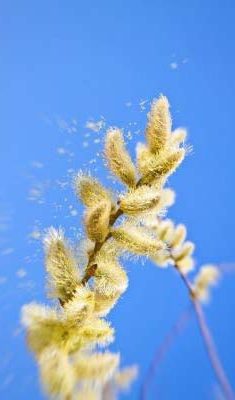
These symptoms sometimes severely impair the quality of life of those affected. When asked “What helps against hay fever?” they are usually recommended strong medications, which in turn lead to side effects such as severe fatigue. There are also natural remedies for hay fever that provide relief.
EXPERIENCE REPORTS
"I suffer from food and pollen allergy. In the last 18 months, my condition increasingly worsened to the point of allergic shock reactions. Unfortunately, conventional medical desensitization did not help. With the intake of the Reishi mushroom came a significant improvement. The food allergy has subsided and the pollen allergy is gone. I can even tolerate nuts again, which always led to a state of shock before."
EXPERIENCE REPORTS
"For approximately four years I am symptom-free, except for very few days", so Mr. K. from Gotha summarizes the effect of the welfare mushrooms. "I am very satisfied with the result. Unlike various asthma sprays and desensitizations that had no lasting success."
EXPERIENCE REPORTS
"By regularly taking Reishi, my life has become worth living again," Mr. E. R. from Neuhof tells us. "The fear of allergies is gone. And with it, eye burning, sneezing, swollen nose and bronchial whistling."
Cross allergies
In the case of an existing pollen allergy, cross-allergy may occur over time, also called “pollen-associated food allergy”. Especially people who react with allergic symptoms to early-flowering shrubs and trees such as birch, alder or hazel, tend to be allergic to nuts and raw fruits such as apple, pear, plum, cherry. If, on the other hand, there is a lead allergy to mugwort, spices and herbs are more likely to become a problem. Most often, those affected then do not tolerate celery. But also pepper chili, tomatoes, anise, fennel, cumin, basil, thyme and other herbs can cause symptoms. However, when pollen from grasses is the problem, soy products, tomatoes, potatoes, peanuts, and wheat and rye flour are often not tolerated.

Every person is unique!
Our experienced team will be happy to advise you in detail and free of charge on all matters relating to your health.
Differentiation allergy vs. intolerance
With food, it is important to distinguish an allergy from an intolerance. The patho-physiological processes are different and naturopathic therapy should take this into account. Unfortunately, confusion still occurs time and again. It is important to know that an allergy is always a reaction of the immune system. In the case of intolerance, on the other hand, the problem lies in the digestive tract. Here, certain enzymes are lacking to break down lactose or fructose, for example.
The patho-physiological processes are different and naturopathic therapy should take this into account. Unfortunately, confusion still occurs time and again. It is important to know that an allergy is always a reaction of the immune system. In the case of intolerance, on the other hand, the problem lies in the digestive tract. Here, certain enzymes are lacking to break down lactose or fructose, for example.
Allergy types
Coombs and Gell introduced a classification system in 1963 according to which all allergies can be assigned to one of four reaction types. These differ with respect to the reaction mechanisms and the time interval between allergen contact and symptom.
Type I Allergy
90 % of all allergies are classified as type I. It is also called “immediate type” because the immune system reacts within seconds to minutes. Type I is present, for example, in allergies to insect venoms and various foods, allergic asthma, and anaphylactic shock. Pollen allergy also falls into this category. The starting point for the immediate reaction to contact with the allergen is the mast cells. They are located in the skin and mucous membranes. On their surface are special antibodies, immunoglobulins E (IgE). Inside there are granules with histamine. If an allergen is bound on the mast cell surface via immunoglobline E, histamine is released. This then triggers allergic reactions such as itching, swelling, rhinitis, asthma, skin reactions, nausea or diarrhea.
Allergy types II and III
Types II and III according to the classification of Coombs and Gell occur much less frequently than type I. Blood group intolerance and allergic reactions to some drugs or occupational allergens (farmer’s lung) are among them. The reaction occurs only between six and twelve hours after allergen contact. Different antibodies are involved. The type II reaction is called the “cytotoxic allergy type”. The complement system plays an important role in their course. In type III, on the other hand, antigen-antibody complexes called immune complexes are deposited and initiate tissue-damaging reactions. The triggers are particularly difficult to identify here, as the reaction occurs with a strong delay, sometimes only after a few days. The allergic reaction is mediated by class M or G immunoglobulins. This group includes, for example, vasculitis (allergic inflammation of blood vessels), nephritis (inflammation of the kidneys), arthritis. Such reactions can also be triggered in part by food. Symptoms may include irritability, fatigue, migraines and eczema.
The late type
In the case of type IV, experts also speak of the “late type” because the body does not react until after 12 hours, sometimes after three days. After type I, this allergic reaction occurs most frequently, for example, in the context of contact allergies, transplant rejection, or allergic rash after taking certain medications. In this process, it is the T lymphocytes that trigger the release of cytokines. As a result, inflammation occurs in the affected areas of the body.
Development of allergies
Excursus - the immune system
Our immune system is a very complex structure with specially coordinated regulatory mechanisms. Various leukocytes, antibodies and messenger substances are involved in allergic reactions, which can be seen just by looking at the different types of allergy. 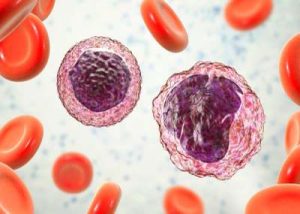 Certain T lymphocytes, so-called T helper cells (TH cells), play an important role in this process. They regulate the formation of the frequently involved immunoglobulins of class E (reagins). A distinction is made between the TH1/TH2 system. The system has important tasks in the defense against diseases. While the TH1 cells eliminate infected and degenerated cells, the TH2 system targets external invaders such as bacteria. In healthy humans, TH1 and TH2 are in balance. As a result of a defensive reaction, one of the two systems may dominate, but the balance is immediately restored after successful control of a disease.
Certain T lymphocytes, so-called T helper cells (TH cells), play an important role in this process. They regulate the formation of the frequently involved immunoglobulins of class E (reagins). A distinction is made between the TH1/TH2 system. The system has important tasks in the defense against diseases. While the TH1 cells eliminate infected and degenerated cells, the TH2 system targets external invaders such as bacteria. In healthy humans, TH1 and TH2 are in balance. As a result of a defensive reaction, one of the two systems may dominate, but the balance is immediately restored after successful control of a disease.
Development of type I allergy
Why are allergies on the rise?
It is discussed that increasing environmental exposure to toxins and foreign substances favors an increase in allergies in the population. Our foods are highly processed and contain many additives and preservatives. Cosmetics contain more and more new chemical compounds, some of which also have hormonal effects. We come into contact with these chemical substances all the time. They irritate the skin and mucous membranes, destroy the body’s natural barriers and open the door to allergens. With regard to pollen allergy, air pollution and climate change are key contributors to its rapid spread. For example, warmer average temperatures extend the pollen season, while higher CO2 concentrations in the air encourage plants to release more pollen at once. Fine dust and ozone in the air we breathe irritate the respiratory tract and act as catalysts for allergic reactions.
What to do with allergies?
If the immune system is “out of sync” and dysbalances with regard to immune reactions are recognizable, it is important to have a relieving and balancing effect through therapeutic measures. With medicinal mushrooms one has very good possibilities to direct immune reactions into the right channels and at the same time to strengthen the immune power, so that we are well protected against pathogens and tumor formation. The beta-glucans contained in the mushrooms play a significant role in this process. They are the most powerful immune modulators that nature has to offer. In addition, mushrooms contribute significantly to the relief of the organism and thus the immune system through their detoxifying effect. They also promote the growth of physiological intestinal bacteria, the so-called intestinal microbiota, through their many dietary fibers. Improving the health of the gut with its associated immune system should be an important goal in therapy. A healthy diet and optimal support of the digestive organs are the key variables in alleviating symptoms in the long term.
Important nutrients
A good additional supply of vitamins and minerals can promote an improvement of allergic symptoms in allergy sufferers. At the top of the list is vitamin C. It is followed by magnesium, calcium and zinc. These micro- or macronutrients reduce the histamine release by the mast cells on the one hand and on the other hand they help with the histamine degradation in the organism.
Healthy bowel
Since the immune system is closely linked to the intestines, strong, balanced defenses are always backed by a healthy intestinal environment. Dysbiosis can increase the 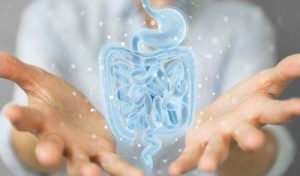 risk of allergies, as pathogenic germs in the intestinal flora can damage the intestinal mucosa by producing toxins. In addition, some of them also produce histamine themselves, which can significantly raise the level in the blood. Therefore, within the framework of a holistic therapy for allergies, the focus should always be on building up a healthy intestinal flora and restoring a strong mucosa. It is here that vital mushrooms can make a great contribution, as we will show you in the second half of this article.
risk of allergies, as pathogenic germs in the intestinal flora can damage the intestinal mucosa by producing toxins. In addition, some of them also produce histamine themselves, which can significantly raise the level in the blood. Therefore, within the framework of a holistic therapy for allergies, the focus should always be on building up a healthy intestinal flora and restoring a strong mucosa. It is here that vital mushrooms can make a great contribution, as we will show you in the second half of this article.
Promote digestive juices
To ensure good digestion it is important to optimize the secretion of digestive juices of the stomach, pancreas and also the flow of bile. Good digestion is very important, especially so that food proteins can be broken down well so that they lose their allergenic potential. To stimulate the digestive juices, bitter substances such as those found in bitter salads or even artichokes are suitable. The latter especially promotes the flow of bile. This enables the liver to better excrete the toxins and thus relieves the burden. In addition, pancreatic enzymes help in the degradation of IgE antibodies, which, as previously described, have a key position with regard to allergy mechanisms.
What else helps against hay fever and Co?
Alone with your food choices you can do a lot against an allergy. Organic products, for example, are relatively low in toxins and pollutants that can throw the immune system out of balance. In addition, some foods such as wine and long-aged cheese have high histamine content. If you already suffer from a type I allergy, you should avoid such products if possible. Many cosmetics also contain allergy-promoting additives. Therefore, give preference to the less polluted natural cosmetics. A simple nasal douche also provides relief from hay fever. This natural remedy is completely free of side effects and you can use it as often as you like. Equally gentle but helpful are acupuncture and homeopathic remedies. By the way, it’s also always worth learning relaxation techniques to manage stress.
Alleviate allergies with vital mushrooms
Traditional Chinese Medicine (TCM) has been utilizing the strengthening effect of medicinal mushrooms for centuries. The therapy of allergies is very well suited for the use of medicinal mushrooms, as they can regulate excessive immune reactions by helping to balance TH1/TH2 imbalances. In addition, they can reduce various stresses on the organism. Unfortunately, however, far too few sufferers know about the benefits of mycotherapy. We would like to change that with this!  Mushrooms contain very valuable bioactive substances, which in the case of allergies can strengthen the organism and directly relieve allergic symptoms : reduce itching of the skin and mucous membranes, reduce mucus production in the respiratory tract, anti-inflammatory effect. As adaptogens, they are able to maintain the body’s resilience and performance even in times of intense negative stress. The use of mushrooms is suitable both for relief of acute allergic symptoms (except anaphylactic shock) and for long-term therapy. The aim is to modulate the immune system in order to reduce the susceptibility to allergies. In case of hay fever, the therapy with vital mushrooms should ideally be started in the symptom-free period, e.g. in autumn/winter, when the immune system can be influenced very well. However, taking mushroom capsules also helps during spring and summer to make burning, tearing, itching and a runny nose more bearable.
Mushrooms contain very valuable bioactive substances, which in the case of allergies can strengthen the organism and directly relieve allergic symptoms : reduce itching of the skin and mucous membranes, reduce mucus production in the respiratory tract, anti-inflammatory effect. As adaptogens, they are able to maintain the body’s resilience and performance even in times of intense negative stress. The use of mushrooms is suitable both for relief of acute allergic symptoms (except anaphylactic shock) and for long-term therapy. The aim is to modulate the immune system in order to reduce the susceptibility to allergies. In case of hay fever, the therapy with vital mushrooms should ideally be started in the symptom-free period, e.g. in autumn/winter, when the immune system can be influenced very well. However, taking mushroom capsules also helps during spring and summer to make burning, tearing, itching and a runny nose more bearable.
Anti-allergic effect of the vital mushrooms
Medicinal mushrooms such as Reishi, Hericium, Pleurotus and ABM support the body in many ways to get allergies and their symptoms under control. In principle, their detoxifying effect is very beneficial, since heavy metal and toxin loads, for example, can greatly impair immune function. The enzymes contained in the fungi play a decisive role in this process. Enzymes are proteins that are quickly inactivated at higher temperatures and can no longer do their job. Therefore, we would like to emphasize at this point how important the processing of the mushrooms is, so that the enzymes remain stable.
Beta-glucans are primarily responsible for the immunomodulatory effects. These polysaccharides activate or modulate various immune reactions, as many scientific studies have now shown. Since allergies are usually associated with inflammatory processes, the triterpenes contained in medicinal mushrooms also play an important role. Namely, they have anti-inflammatory and antihistamine effects. The reishi mushroom is particularly rich in triterpenes, especially its spores. Oxidative stress, i.e. an excess of oxygen free radicals in the organism, intensifies allergic symptoms in particular. Furthermore, inflammation, which occurs in the case of allergy, in turn also generates increased oxygen radicals itself. The goal of therapy should therefore always be to reduce this oxidative stress. Medicinal mushrooms contain various antioxidants, e.g. enzymes such as superoxide dismutase, catalases and peroxidases, but also phenolic compounds, which have an antioxidant effect.
Vital mushroom Reishi
Reishi is by far the most important medicinal mushroom for the treatment of allergies. The main reason for this is its high content of triterpenes. We have already mentioned their anti-inflammatory effect. But they also reduce histamine release due to their high concentration in reishi. Thus, Reishi can effectively improve allergic symptoms such as swelling, itching and symptoms on the eyes. It also strengthens the bronchi, relieves cough and loosens mucus stuck there. This is a boon for hay fever and asthmatic complaints.
On closer inspection, the triterpenes 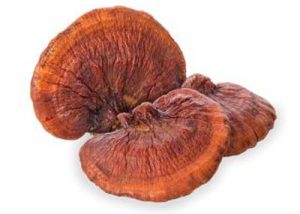 have a very similar effect to cortisone, which, however, can have strong side effects. When choosing a Reishi preparation, always make sure that it contains the whole mushroom. The triterpenes are mainly found, as already mentioned, in the fruiting body and spores of the fungus. In addition to the triterpenes, Reishi has other valuable ingredients and properties that provide relief for allergy sufferers:
have a very similar effect to cortisone, which, however, can have strong side effects. When choosing a Reishi preparation, always make sure that it contains the whole mushroom. The triterpenes are mainly found, as already mentioned, in the fruiting body and spores of the fungus. In addition to the triterpenes, Reishi has other valuable ingredients and properties that provide relief for allergy sufferers:
- The contained germanium increases the oxygen saturation of the blood and thus the supply of the entire body. This means great relief for both allergic and chronic asthma.
- The beta-glucans from the Reishi alleviate excessive immune reactions.
- By taking Reishi, the liver is activated in its function. According to the 5-element theory of TCM, this weakens allergic symptoms in the eyes in particular, since the eyes belong to the functional circle of the liver.
- In the area of the psyche, the Reishi has a balancing and calming effect. This prevents the release of stress hormones such as cortisol, which increase the risk of allergies.
- Overall, the ingredients of reishi have a soothing effect on the intestines and relieve irritation of the intestinal mucosa. Thus, the medicinal mushroom maintains the natural body barrier against allergens.
- In a study with children suffering from neurodermatitis, reishi achieved a significant improvement in the skin’s appearance within three months.
Vital mushroom Hericium
Together with Reishi, Hericium forms a solid base in the fight against allergies. Here, the specialty of Hericium is in the area of food allergies and the often associated leaky gut syndrome. In fact, it supports the development of a healthy mucosal barrier in the gastrointestinal tract. As a result, allergens have less chance of entering the body, thus reducing the risk of sensitization. This is because a large part of our immune system is associated with the intestinal mucosa, so that if the mucosa is defective, irritation of immune mechanisms can occur much more quickly. Thus, by supporting intestinal health, Hericium simultaneously strengthens the immune system. In addition, Hericium, like all other vital mushrooms, has a pronounced prebiotic effect, which means that the intestinal flora is built. Above all, their diversity is promoted, which determines the quality of the microbiota in the intestine.
In addition, there is a protective effect on the nervous system. Thus, the vital mushroom can reduce stress and promote inner peace. Allergic symptoms such as itching, sneezing attacks and constant runny nose can already make people very nervous and affect them. It strongly influences the so-called intestinal-brain axis, i.e. via its intestinal effect it also supports psychological-emotional processes.
Vital mushroom Pleurotus
Like reishi, pleurotus can reduce the release of histamine and is therefore able to directly alleviate acute allergy symptoms.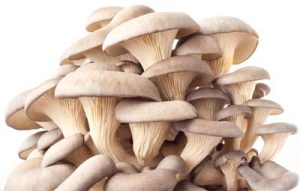 The beta-glucan pleuran it contains is important for its effect. It showed a clear anti-allergic effect in a study on children with respiratory symptoms. Combined therapy with the mushrooms Pleurotus, Reishi and Hericium is advantageous. If different mushrooms are used at the same time, they work very nicely together, synergistically, and improve the success of the therapy.
The beta-glucan pleuran it contains is important for its effect. It showed a clear anti-allergic effect in a study on children with respiratory symptoms. Combined therapy with the mushrooms Pleurotus, Reishi and Hericium is advantageous. If different mushrooms are used at the same time, they work very nicely together, synergistically, and improve the success of the therapy.
The positive effect of Pleurotus on intestinal flora has been very well studied. Due to its prebiotic effect, it strengthens a healthy intestinal flora, as already described. Lactobacilli and bifidobacteria in particular proliferate. These physiological intestinal bacteria play a decisive role in determining the intestinal environment. By producing various acids such as lactic acid, they slightly lower the pH (acidity) of the intestine. This displaces pathogenic germs, which themselves also produce histamine. This is especially important after antibiotic therapy, because it increases the killing of the important “good” bacteria. The more histamine is present in the organism, the higher the risk of allergic reactions. It is also very helpful that Pleurotus medicinal mushroom boosts the absorption of B vitamins in the intestines. First and foremost, vitamin B6 is important for the breakdown of histamine. It acts as a co-factor for the enzyme diamine oxidase, which breaks down histamine.
Vital mushroom Polyporus
First of all, Polyporus – like Poria cocos, by the way – shuts down mucus production in allergic rhinitis. That is why this vital mushroom is considered a natural remedy for hay fever, which can significantly improve the quality of life during the pollen season. However, the most important area of action of Polyporus is the lymphatic system. This it stimulates and thus improves lymphatic circulation. Allergy sufferers often benefit from the support of the lymphatic system. Cures with polyporus they ideally carry out in the winter. Because in the cold season, according to the teachings of TCM, the cleansing of the lymphatic as well as the renal bladder system is particularly effective. This way, you will enter the spring stronger and with a lower susceptibility to allergic reactions.
Vital mushroom Cordyceps
Cordyceps is one of the vital mushrooms that help the psyche to achieve more harmony. Asians appreciate this medicinal mushroom for its positive effect on the functional circuit of the kidney. According to their view, the kidney stores our kidney energy, which significantly determines our constitution. The mushroom has a strengthening and balancing effect on the kidney and adrenal cortex. The latter is a central production site for stress hormones. Low levels of stress hormones, in turn, lower the risk of allergies. On top of that, cordyceps increases the quality of sleep. On the one hand, this means a good opportunity for the body and immune system to regenerate. On the other hand, cordyceps counteracts sleep disorders due to allergic symptoms. In addition to the psyche, cordyceps also supports the lungs in their work. It forces the exhalation of CO2 on one side and improves the uptake and utilization of oxygen on the other. Together with Reishi, it therefore forms the standard team in the treatment of allergic asthma. Finally, like other medicinal mushrooms, cordyceps modulates the immune system and counteracts inflammation.
Vital mushroom Agaricus blazei murrill
Of all the medicinal mushrooms scientifically studied to date, Agaricus Blazei Murill (ABM) has the highest concentration of beta-glucans.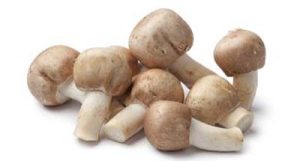 This is the reason for its strong immunomodulating effect. It strengthens the immune system just as it dampens excessively violent reactions. It also directly inhibits the release of histamines, which can provide great relief in type I allergies. ABM even prevents anaphylactic shock to a certain extent. In addition, the ingredients of ABM promote the development of healthy intestinal flora, which makes it more difficult for allergens to penetrate. According to TCM teachings, its contribution to spleen health is an essential component in the treatment of allergies. First, the spleen is the center of life energy (chi) in general. Secondly, the spleen and lungs are closely related, which is why the lungs’ defenses are stronger when the spleen is working well.
This is the reason for its strong immunomodulating effect. It strengthens the immune system just as it dampens excessively violent reactions. It also directly inhibits the release of histamines, which can provide great relief in type I allergies. ABM even prevents anaphylactic shock to a certain extent. In addition, the ingredients of ABM promote the development of healthy intestinal flora, which makes it more difficult for allergens to penetrate. According to TCM teachings, its contribution to spleen health is an essential component in the treatment of allergies. First, the spleen is the center of life energy (chi) in general. Secondly, the spleen and lungs are closely related, which is why the lungs’ defenses are stronger when the spleen is working well.
Vital mushroom Maitake
Also the medicinal & vital mushroom Maitake contains very significant beta-glucans, especially Grifon D, which are very promising in the therapy of immune imbalances. This fungus is able to attenuate excessive TH2 immune responses. The entire response cascade mediated by the release of interleukins by TH2 cells falters. In addition, maitake is also a benefactor of the intestine and inhibits inflammatory processes there. In addition, in case of allergy to certain foods, this vital mushroom offers acute help because it has a constipating effect.
Important information on taking vital mushrooms for allergies
If you also suffer from allergies, vital mushrooms can give you relief. However, as a layman it is hardly possible to find the perfect combination and dosage of medicinal mushrooms for your own constitution. Therefore, always contact a mycotherapist you trust or directly our experts, who will advise you competently thanks to many years of experience.
Generally, medicinal mushrooms must be taken over a long period of time 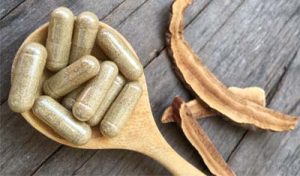 to develop their full effect. Since at most initially there may be mild reactions of the body to the natural remedy, but long-term or severe side effects are excluded, the period of intake is not a problem. The simplest and safest are such mushroom preparations, which are packaged as powder in capsules. Also, make sure that the manufacturer of the vital mushroom powder complies with the German guidelines for organic farming. Only then side you can be sure that no toxins enter your organism through the mushroom powder.
to develop their full effect. Since at most initially there may be mild reactions of the body to the natural remedy, but long-term or severe side effects are excluded, the period of intake is not a problem. The simplest and safest are such mushroom preparations, which are packaged as powder in capsules. Also, make sure that the manufacturer of the vital mushroom powder complies with the German guidelines for organic farming. Only then side you can be sure that no toxins enter your organism through the mushroom powder.
Please consult your therapist before use!
DO YOU HAVE ANY QUESTIONS?
We will gladly take time for you. In our free consultation, we answer all your health questions individually and personally. We are looking forward to meeting you!
